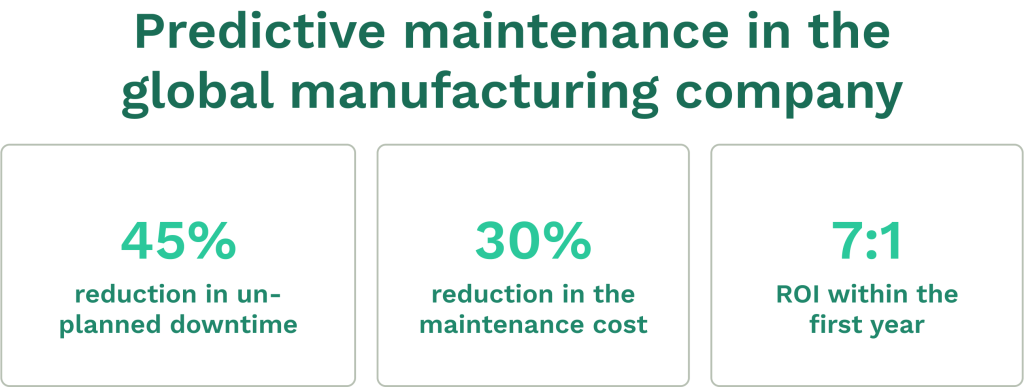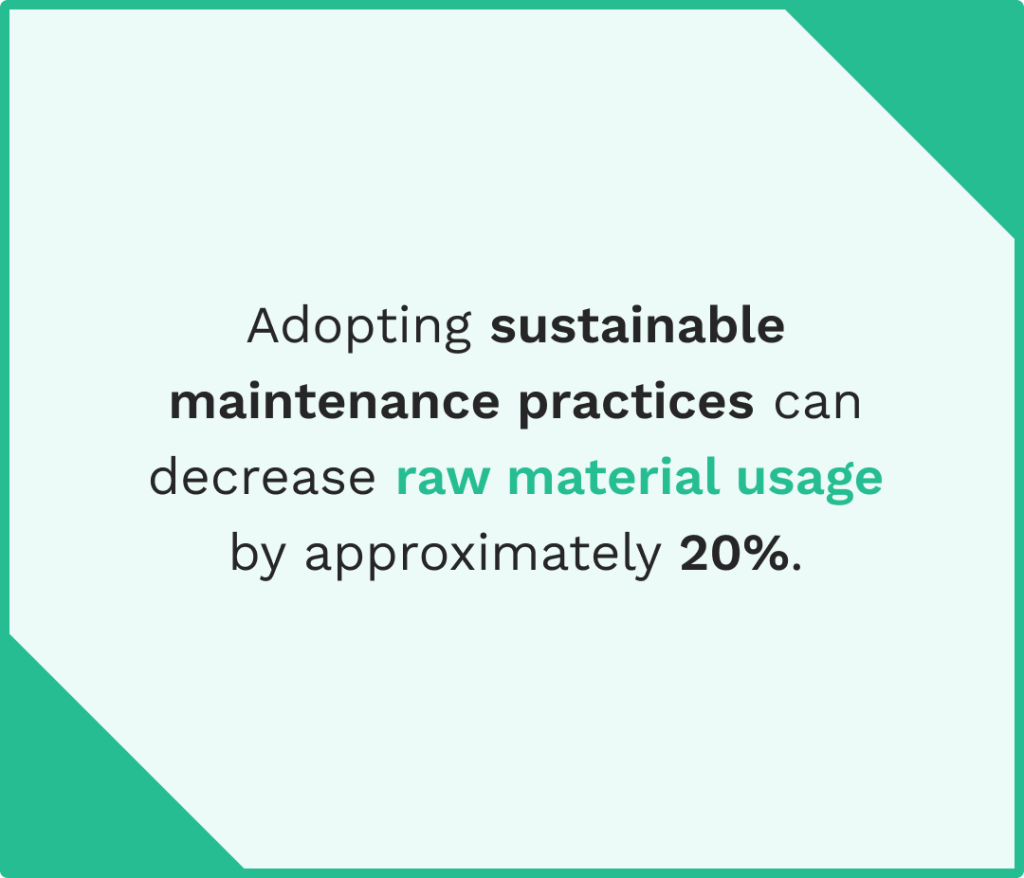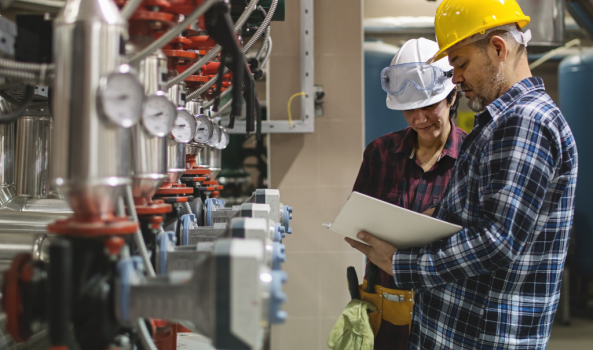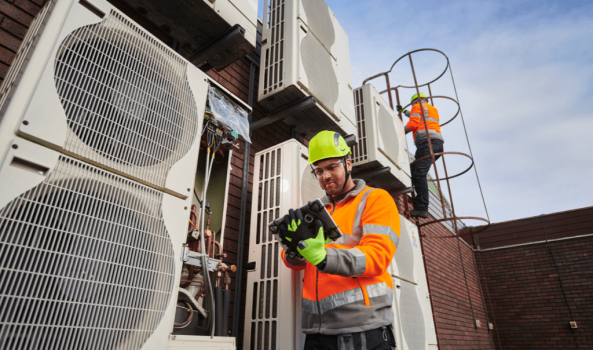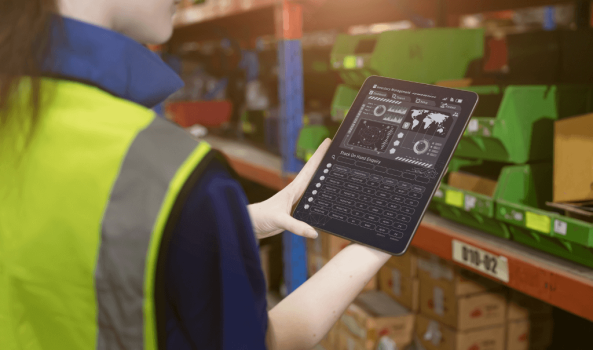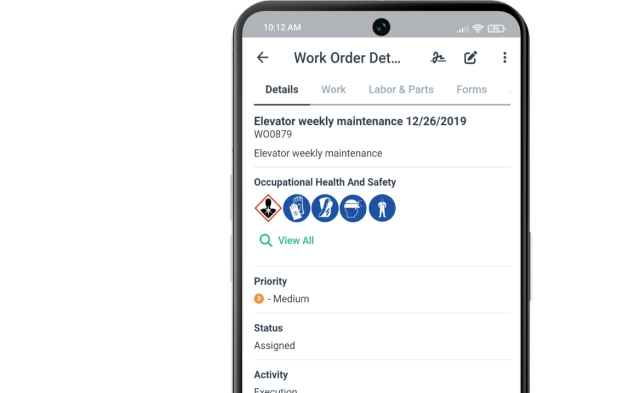Get a Free WorkTrek Demo
Let's show you how WorkTrek can help you optimize your maintenance operation.
Try for freeKey Takeaways
- Organizations that implement systematic maintenance tracking achieve a 545% ROI, with every dollar invested in preventive maintenance saving $5 in future costs while reducing unplanned downtime by up to 91%.
- Prioritizing maintenance based on criticality ensures that 60-70% of resources are allocated to equipment that most significantly impacts operations
- Modern CMMS platforms automate scheduling, enable mobile work order management, and provide real-time visibility—with 52% of industrial plants now using these systems to transform operations.
Picture this: A telecommunications company invests $1 in preventive maintenance and recovers $5.45.
That’s not a typo. Based on a recent study by Jones Lan LaSalle, companies that implemented preventive maintenance realized a 545% return on investment.
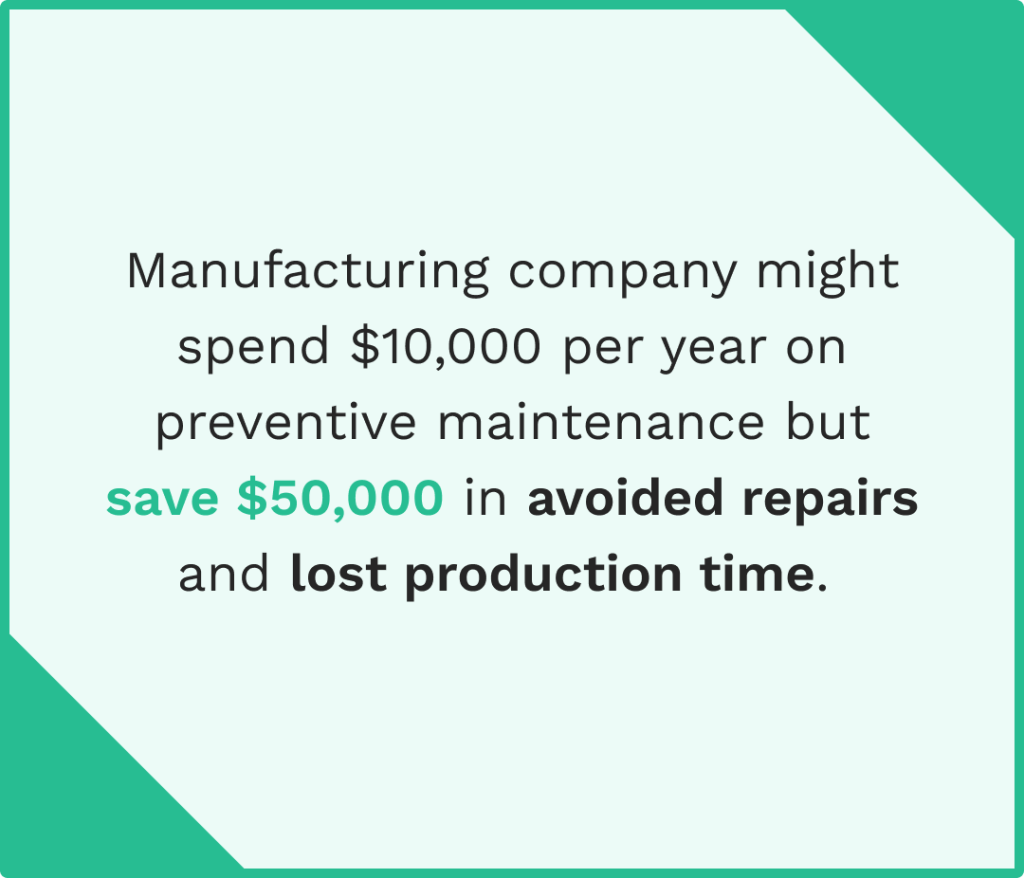
Yet despite these staggering returns, most organizations still struggle with tracking maintenance effectively, leaving millions on the table through unplanned downtime and reactive repairs.
The result? According to recent industry data, unplanned downtime costs U.S. businesses over $50 billion annually, with the average manufacturer losing $125,000 per hour when critical equipment goes down.
Organizations that master maintenance tracking report 91% improvements in equipment downtime, 12-18% reductions in maintenance costs, and equipment lifespans extended by 20% or more.
Understanding the Current Maintenance Landscape
Before exploring how to keep track of maintenance in 6 steps, let’s first explain why traditional approaches fail.
Most organizations rely on outdated methods, like manual paper logs or spreadsheets. This can lead to all your domain knowledge walking out the door when experienced maintenance technicians leave.
The statistics paint a sobering picture.
According to a recent study, only 24.5% of a maintenance technician’s time is actually productive.

What’s going on with the rest? It is generally lost to searching for parts, waiting for equipment access, or dealing with incomplete work orders.
Meanwhile, 90% of equipment failures are entirely preventable. They don’t happen because equipment simply wears out, but because maintenance tasks are not properly tracked and executed.
This reactive approach creates a vicious cycle.
When you’re constantly fighting fires, there’s no time for preventive maintenance tasks.
Equipment can degrade more quickly, leading to increased emergencies, higher costs, and frustrated maintenance personnel.
How do you break this cycle? It requires a fundamental shift in how we track and manage maintenance work.
Step 1: Create a Comprehensive Asset Inventory
Always start by creating a full inventory of all of your assets.
You can’t schedule maintenance for equipment you don’t know exists, and you can’t prioritize maintenance tasks without understanding the role each piece of equipment plays in your operations.
Building Your Asset Database
it all starts with conducting a thorough asset discovery process.
Walk your facility, and document every piece of equipment that requires regular maintenance. This includes obvious assets like production machinery and HVAC systems, but don’t overlook supporting equipment like compressed air systems, electrical panels, or safety equipment.
For each asset, capture essential information:
- Manufacturer, model, and serial numbers
- Installation or purchase dates
- Location within your facility
- Warranty information and service contracts
- Operating specifications and requirements
- Historical maintenance records if available
You can use digital tools like a CMMS platform to streamline this process.
QR codes or RFID tags on equipment enable maintenance technicians to instantly access asset information, maintenance history, and upcoming preventive maintenance schedules directly from mobile devices.
This eliminates the guesswork and ensures everyone has access to accurate, up-to-date information.
Standardizing Asset Information
Consistency is key when building your asset inventory.
Establish naming conventions that make sense for your maintenance team. Instead of “Pump 1” and “Pump 2,” use descriptive identifiers like “CW-PUMP-01-NORTH” that indicate the system (cooling water), equipment type, number, and location.
Create asset hierarchies that accurately reflect the relationships between equipment and your operations.
For example, a packaging line might include multiple components, such as conveyor systems, filling equipment, sealing machines, and labeling systems.
Understanding these relationships enables maintenance personnel to recognize how individual maintenance tasks affect overall production.
If you spend the time creating a comprehensive asset inventory, it pays dividends immediately.
Step 2: Assess and Prioritize Based on Criticality
Not all equipment is created equal.
A critical production line that generates $100,000 in revenue per hour demands different maintenance attention than a backup air compressor in a storage area.
This is where you need to assess the criticality of your equipment.
Conducting Criticality Analysis
When assessing the criticality of assets examine the following factors:
- Impact on Operations
- What happens if the equipment fails
- Can it cause production to fully stop?
- Are there any safety issues if it fails?
- Is the equipment associated with any regulatory requirements?
One approach is to use a scoring system to objectively rank assets.
Many maintenance teams employ the Risk Priority Number (RPN) methodology, multiplying three factors:
- Severity: Impact of failure (1-10 scale)
- Occurrence: Likelihood of failure (1-10 scale)
- Detection: Difficulty of detecting problems before failure (1-10 scale)
For example, a main production conveyor might score:
- Severity: 9 (production stops)
- Occurrence: 4 (occasional issues)
- Detection: 3 (problems usually visible)
- RPN = 9 × 4 × 3 = 108
Compare this to a backup ventilation fan:
- Severity: 2 (minor comfort issue)
- Occurrence: 2 (rare failures)
- Detection: 5 (hidden from view)
- RPN = 2 × 2 × 5 = 20
The higher RPN indicates where maintenance resources should be focused.
Creating Maintenance Priority Tiers
Based on criticality scores, organize assets into tiers:
Critical Assets:
These represent your highest priority for preventive maintenance tasks. Failure can cause significant operational, safety, or financial impact.
You should implement a comprehensive preventive maintenance program, condition monitoring, and possibly redundant systems. The ideal approach is to allocate 60-70% of your maintenance resources here.
Essential Assets:
This equipment is important for smooth operations, but it is also available with workarounds or backup systems. Equipment in this category receives regular preventive maintenance, but with longer intervals between inspections.
The ideal approach is to dedicate 20-30% of resources to this tier.
Non-Critical Assets:
These assets would have minimal impact on operations if they fail. These might operate on a run-to-failure strategy or receive only basic preventive maintenance. Here, you might want to limit resource allocation to 10% or less.
This tiered approach can keep your maintenance team focused on efforts that matter the most.
Step 3: Develop Tailored Maintenance Strategies
Now that your assets have been identified and prioritized, it’s time to develop specific maintenance strategies. These strategies should be catered to each equipment category.
The key is matching the right maintenance approach to each asset’s criticality, failure patterns, and operational requirements.
Choosing the Right Maintenance Type
Time-Based Maintenance:
Schedule maintenance tasks at fixed calendar intervals—daily, weekly, monthly, or annually. This approach works well for equipment with predictable wear patterns or those subject to regulatory requirements.
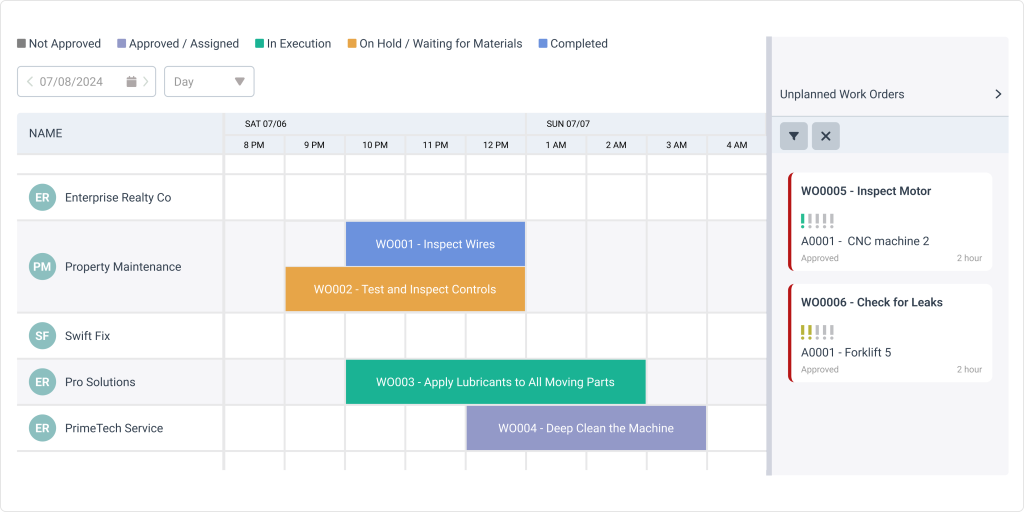
Some examples of time-based maintenance include monthly filter changes, annual safety inspections, or quarterly lubrication of bearings. Time-based maintenance forms the backbone of most preventive maintenance schedules.
Usage-Based Maintenance:
This is when maintenance tasks are triggered based on equipment usage. For instance, this could be operating hours, production cycles, or mileage.
An injection molding machine may require maintenance every 10,000 cycles, while a fleet vehicle typically needs service every 5,000 miles. This approach keeps maintenance tasks aligned with the actual wear of the equipment.
Condition-Based Maintenance:
This is when maintenance technicians monitor the condition of equipment through regular inspections or the use of sensors. Equipment is then scheduled for maintenance when indicators show degradation.
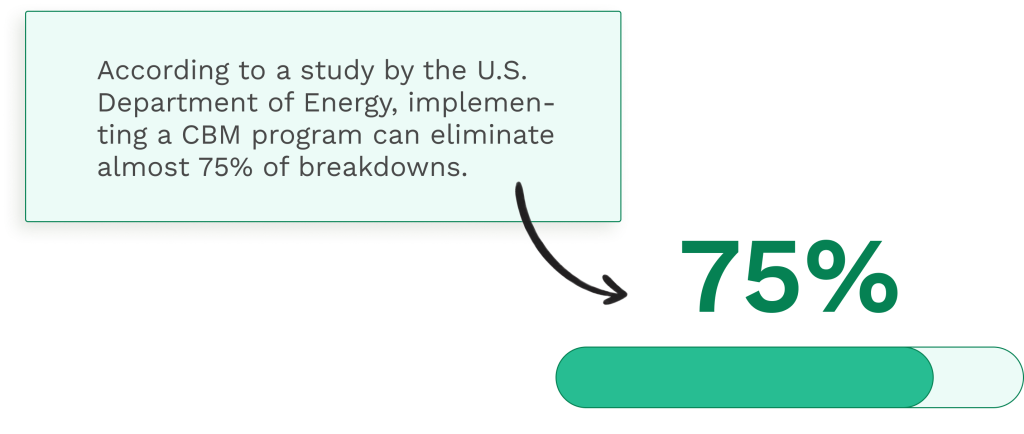
Vibration analysis on rotating equipment, oil analysis for hydraulic systems, or thermographic inspections of electrical panels can identify issues before failure occurs. This approach can optimize maintenance timing and reduce unnecessary maintenance tasks.
Predictive Maintenance:
Leverages advanced analytics and IoT sensors to forecast failures before they happen. Predictive maintenance analyzes patterns in temperature, vibration, pressure, and other parameters to identify subtle changes indicating impending problems.
While this requires more sophisticated equipment and technology, studies show that predictive maintenance can reduce maintenance costs by 20-25% compared to preventive approaches alone.
How to Create a Detailed Maintenance Plan
If you run a maintenance organization, you need a detailed maintenance plan.
Here is how to create one:
Task Procedures:
These are the step-by-step instructions for completing maintenance work safely and effectively. Don’t always assume knowledge. Document everything from lockout/tagout procedures to torque specifications.
Resource Requirements:
List necessary tools, parts, and materials. Include part numbers, quantities, and storage locations. This approach minimizes downtime while technicians search for resources.
Skill Requirements:
Specify required certifications, training, or technical skills. Some tasks might require licensed electricians, certified welders, or specialized vendor technicians.
Time Estimates:
Do your best to provide realistic durations for maintenance tasks. You can do that by using historical data to understand time estimates per task better. This helps maintenance planners to collaborate with production schedules and allocate resources appropriately.
Safety Procedures:
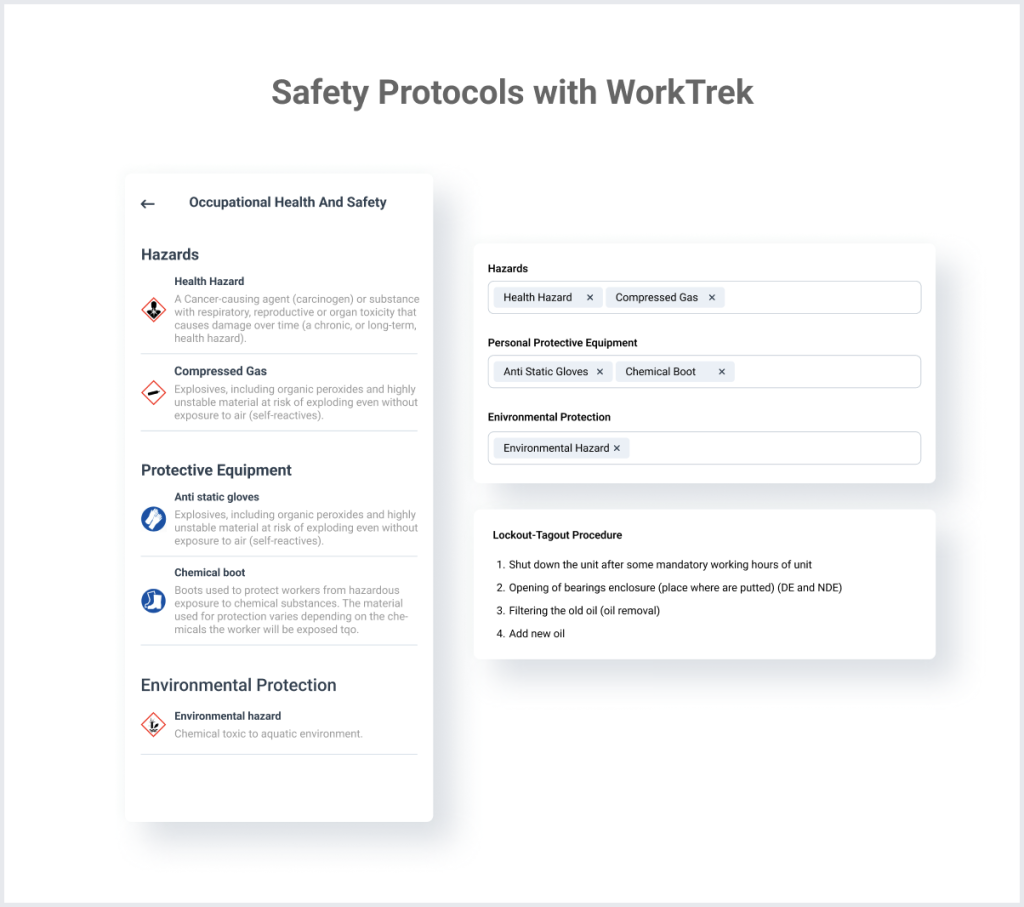
Your plan should also include detailed information about the required personal protective equipment, safety protocols, and potential hazards. Never compromise safety for speed or convenience.
Step 4: Implement Systems and Technology
Stop using paper-based maintenance tracking. All successful maintenance organizations have one thing in common: They understand how to use technology tools to improve their operational efficiency.
Digital systems can streamline the complexity of scheduling maintenance tasks, tracking work orders, managing inventory, and analyzing performance. This is where a Computerized Maintenance Management System (CMMS) becomes invaluable.
Selecting the Right CMMS Platform
Today’s preventive maintenance software market offers solutions for every organization size and industry. 52% of industrial plants now utilize CMMS systems, and 95% report positive ROI. When evaluating options, consider:
Core Functionality:
At a minimum, your CMMS should handle work order management, preventive maintenance scheduling, asset tracking, and inventory management. Look for systems that automate routine tasks, such as generating work orders based on maintenance triggers or sending notifications when maintenance tasks are due.
Mobile Accessibility:
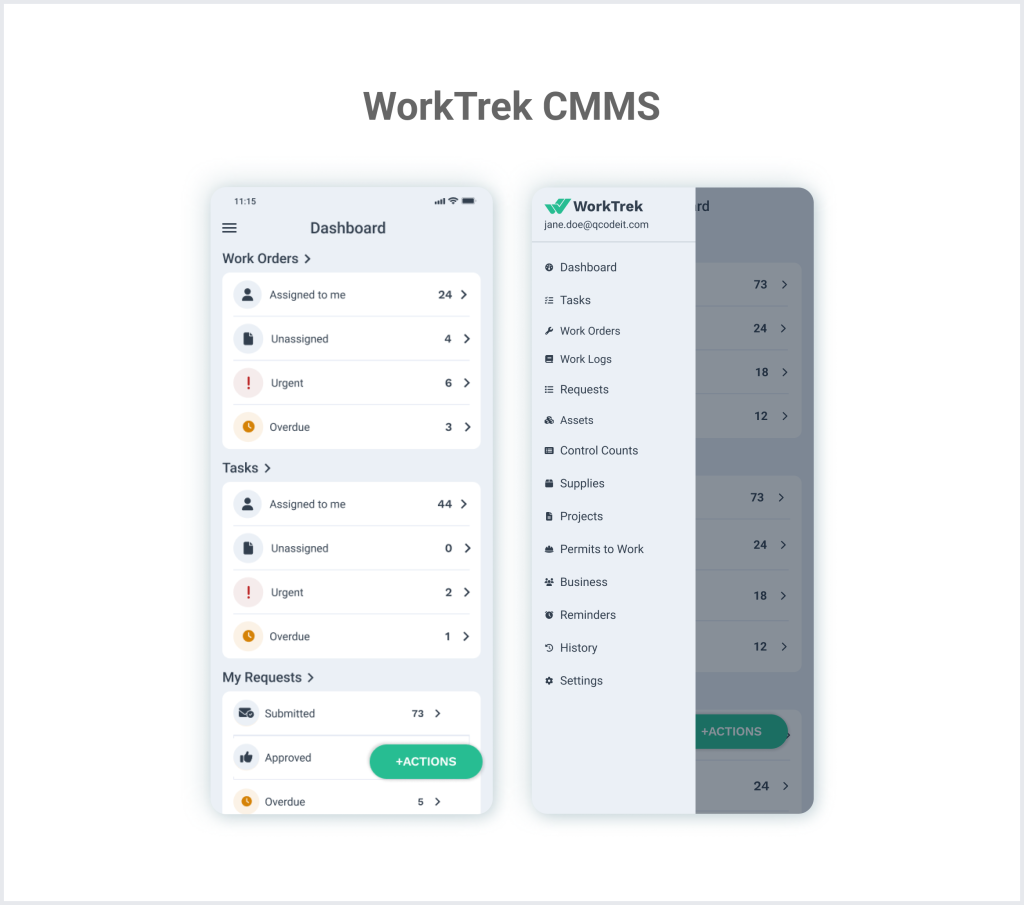
With maintenance technicians spending most of their time in the field, having a CMMS product with an easy-to-use yet functional mobile app is non-negotiable. Technicians should be able to receive work orders, update task status, notifications, access equipment manuals, and record findings directly from smartphones or tablets.
Integration Capabilities:
Your CMMS shouldn’t exist in isolation. Integration with enterprise resource planning (ERP) systems, production scheduling software, and IoT platforms creates a unified maintenance ecosystem.
User Experience:
You want a system that your maintenance team wants to use. When evaluating systems, prioritize intuitive interfaces, logical workflows, and minimal training requirements.
Implementation Best Practices
Having a good implementation process can improve the chance of success for your organization.
We suggest you consider the following phased approach:
Phase 1 – Foundation (Months 1-2):
Start with basic functionality. Import your asset database, set up user accounts, and begin tracking reactive maintenance through digital work orders. This allows teams to familiarize themselves with the system without overwhelming them.
Phase 2 – Preventive Maintenance (Months 3-4):
Add preventive maintenance schedules for critical equipment. Set up automated work order generation based on your maintenance triggers, calendar dates, meter readings, or condition thresholds. Begin tracking preventive maintenance compliance rates.
Phase 3 – Optimization (Months 5-6):
Expand features to include inventory management, detailed reporting, and performance analytics. Integrate with other internal systems and refine workflows based on user feedback. Add mobile access for field technicians.
Phase 4 – Advanced Features (Months 6+):
Implement predictive maintenance capabilities, advanced analytics, and continuous improvement processes to drive operational efficiency. By this stage, the system should be fully embedded in daily operations.
WorkTrek CMMS, for example, follows this implementation philosophy, enabling organizations to start simple and scale functionality as teams become comfortable. You can very easily enable or disable features that are visible to the users.
The platform’s intuitive design means maintenance teams can begin logging work orders within hours, not weeks, while its comprehensive feature set supports long-term growth.
Training and Adoption Strategies
Technology alone isn’t enough to solve all your maintenance solutions. You need staff members who are well-trained and can efficiently manage tasks.
This means that you should invest heavily in training and support to ensure successful adoption:
Create role-specific training programs. Maintenance technicians need different skills from maintenance planners or managers. Tailor training to each group’s responsibilities and system interactions.
Identify champions within your maintenance team. These early adopters can offer peer support, share best practices, and assist in troubleshooting issues.
Provide ongoing support through multiple channels—documentation, video tutorials, in-app guidance, and help desk support. Remember, even experienced technicians might struggle with new technology initially.
Keep track of metrics. Monitor login rates, work order completion times, and mobile app usage. Low adoption in specific areas indicates where additional training or system refinement might be needed.
Step 5: Execute and Track Work Orders Systematically
Once systems are in place and maintenance strategies have been defined, shift your focus to execution.
This is where the proverbial rubber meets the road.
Create Effective Work Orders
Well-structured work orders are the backbone of maintenance operations. They communicate what needs to be done, when, by whom, and with what resources.
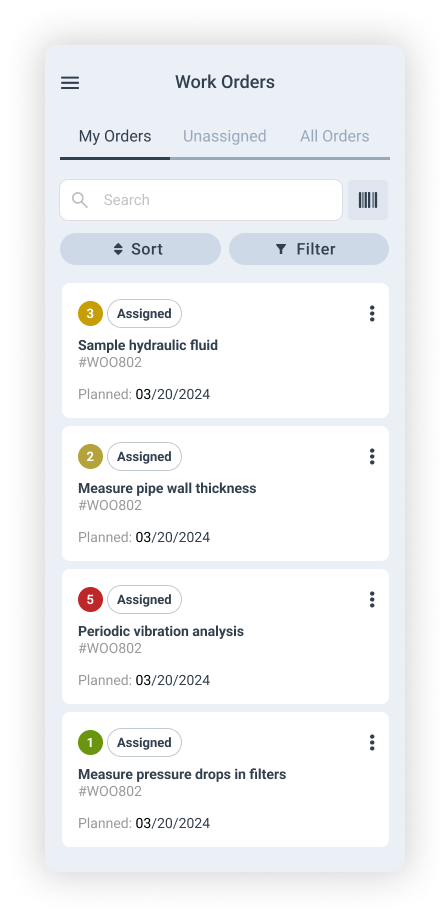
What should be included in every work order?
Clear Descriptions:
Specify exactly what maintenance work needs to be performed. Creating a work order that says “Check equipment” is insufficient. A good example is: “Inspect conveyor belt tension, adjust to 50 PSI if outside 48-52 PSI range” provides actionable guidance.
Priority Levels:
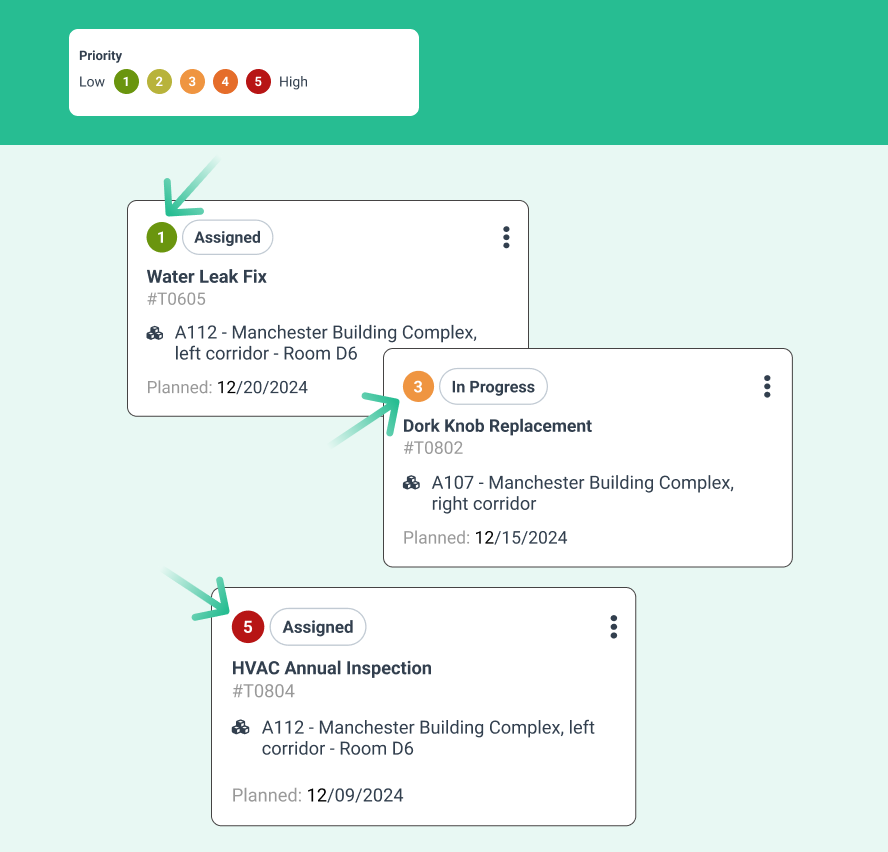
Every work order should have a priority level.
- Emergency: Safety hazard or production stopped
- Urgent: Production impaired, complete within 24 hours
- Normal: Scheduled maintenance or minor issues
- Deferred: Can be bundled with future maintenance
Resource Allocation:
Define and assign tasks based on technician skills, availability, and workload. Also, don’t just assign all electrical work to a single senior technician. You want to develop skills across the team to develop expertise.
Required Parts and Tools:
List everything needed to complete the job. This prevents technicians from starting work only to discover missing components, wasting time and creating incomplete maintenance tasks.
Managing Work Order Flow
Start by implementing a standardized workflow that moves work orders efficiently from creation to completion:
Request and Review:
Anyone should be able to request maintenance, but these requests need to be reviewed before they become work orders. Maintenance planners or managers verify the issue, determine priority, and identify required resources.
Planning and Scheduling:
Coordinate maintenance activities with production schedules to minimize disruption. Bundle related tasks when possible. If you plan on shutting down a line for one repair, complete all pending maintenance work on that equipment.
Assignment and Dispatch:
Assign tasks to appropriate technicians with clear completion expectations. Modern CMMS platforms, such as WorkTrek, can automate assignments based on skills, location, and availability.
Execution and Documentation:
Technicians should complete assigned tasks and document their work thoroughly. Record actual time spent, parts used, problems encountered, and recommendations for future maintenance. Also include any time utilized on an asset by external contractors. This historical data proves invaluable for identifying trends and optimizing maintenance schedules.
Review and Closure:
Maintenance managers review completed work orders for quality and completeness. Look for patterns to help identify recurring issues and perform root cause analysis.
Real-Time Tracking and Communication
Modern maintenance operations demand real-time visibility. Maintenance managers need to know what’s happening now, not what happened yesterday.
CMMS platforms enable this transparency:
Mobile updates from technicians provide instant status changes and notify maintenance managers.
When a critical repair takes longer than expected, managers can adjust schedules and communicate with operations immediately.
Dashboards in maintenance shops and control rooms display the current work order status, technician locations, and upcoming scheduled maintenance activities.
This visibility enables teams to coordinate their efforts and identify potential resource conflicts.
Automated notifications keep stakeholders informed.
When preventive maintenance tasks are generated, assigned technicians receive alerts. When critical equipment returns to service, operations gets notified automatically.
Step 6: Measure Performance and Continuously Improve
You can’t improve what you don’t measure. The final step in effective maintenance tracking involves establishing metrics, analyzing performance, and implementing improvements based on data-driven insights.
Key Performance Indicators for Maintenance
Focus on metrics that drive meaningful improvement in maintenance operations:
Mean Time Between Failures (MTBF):
Measures the average time between equipment failures. Increasing MTBF generally indicates improving reliability. Track this for critical assets to validate the effectiveness of your preventive maintenance program.
This metric tracks the average time to restore equipment to operation. Decreasing MTTR might indicate better training, improved parts availability, or more effective maintenance procedures.
Preventive Maintenance Compliance (PMC):
PMC measures the percentage of scheduled preventive maintenance tasks completed on time. World-class organizations achieve 90% or higher. Low compliance often predicts future reactive maintenance increases.
Planned Maintenance Percentage (PMP):
PMP is the ratio of planned to total maintenance hours. Leading organizations achieve 80-90% planned work. Higher percentages indicate proactive maintenance management and better resource utilization.

Overall Equipment Effectiveness (OEE):
Combines availability, performance, and quality metrics. While primarily an operational metric, maintenance has a significant impact on the availability component.
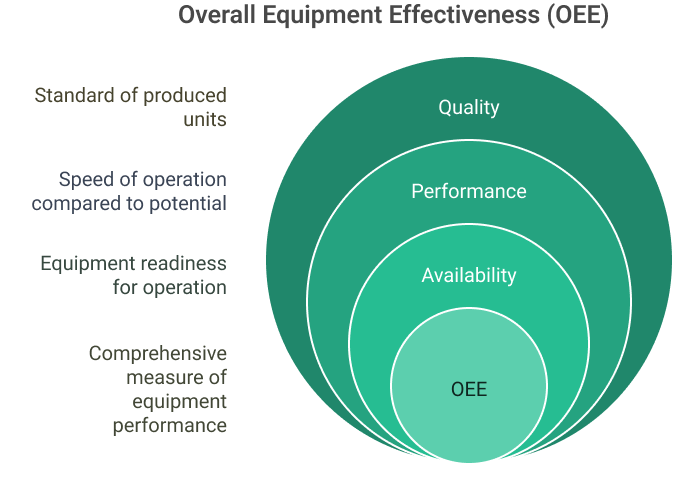
Maintenance Cost as Percentage of Replacement Asset Value (RAV):
Typically 2-5% for most industries. Higher percentages may indicate aging equipment that requires replacement or inefficient maintenance practices.
Future Trends in Maintenance Management
The maintenance field is evolving rapidly, mainly driven by technological advancements and changing business demands.
Some of the technologies changing the maintenance industry include:
Digital Twins and Simulation
Digital twins are virtual replicas of physical assets. This enables maintenance teams to simulate different scenarios without risking actual equipment.
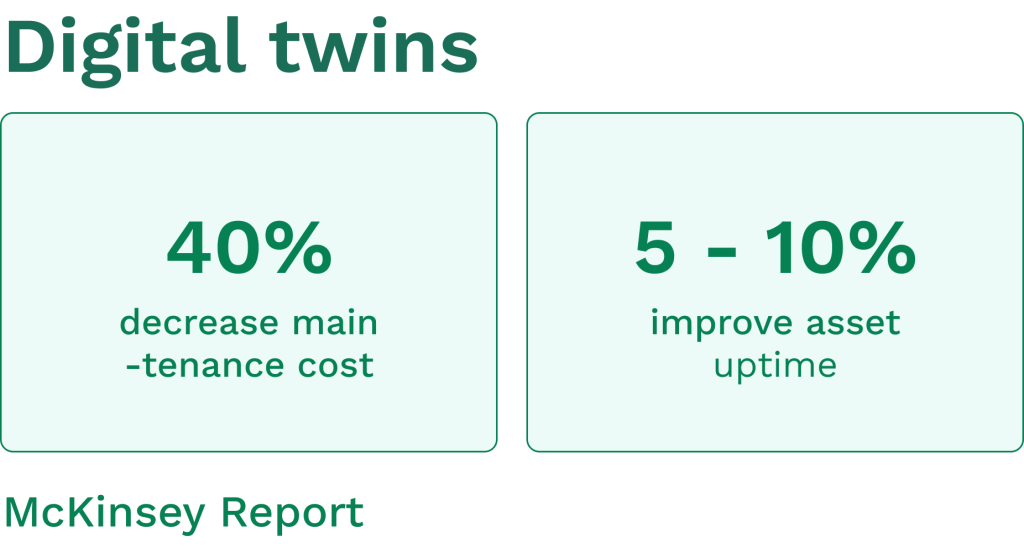
It also enables maintenance teams to test maintenance strategies virtually, predict the impact of failures, and optimize maintenance intervals. As IoT sensors become ubiquitous, digital twins are projected to be used by 70% of manufacturers by 2025.
Augmented Reality Support
AR technology overlays digital information onto physical equipment. This guide helps maintenance technicians navigate complex procedures.
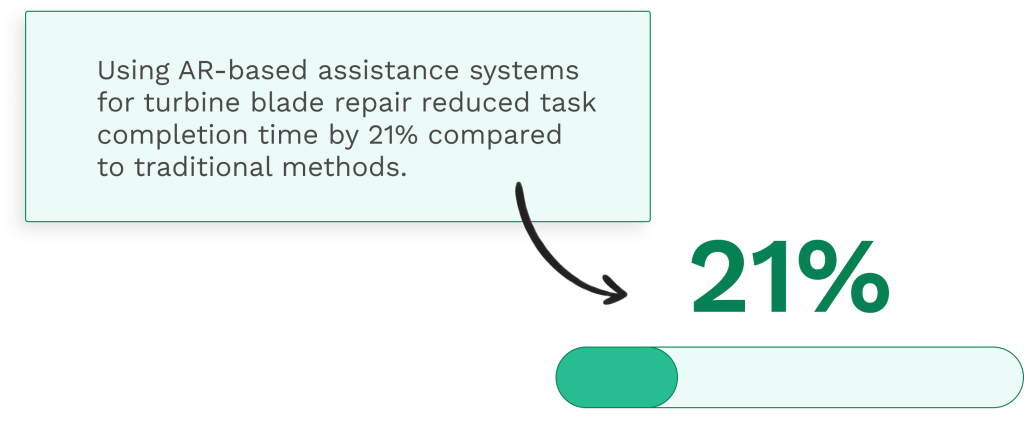
Imagine pointing a tablet at a pump and seeing maintenance instructions, torque specifications, and historical failure points overlaid on the actual equipment.
Autonomous Maintenance
Machines increasingly maintain themselves. Self-lubricating bearings adjust oil flow based on temperature and load.
Smart filters initiate replacement orders when pressure differentials indicate clogging. While human oversight remains important, autonomous maintenance will handle routine tasks, freeing technicians to focus on more complex work.
Sustainability Integration
Maintenance organizations cannot ignore environmental considerations. Some key metrics to track include energy consumption, the use of environmentally friendly lubricants, and efforts to support the organization’s sustainability goals.
Conclusion
Transforming maintenance from a reactive state to a proactive one is required for success.
The six-step framework provides a clear path: identify your assets, apply tailored strategies, leverage technology, manage work orders, measure performance, and continually improve.
The payoff extends beyond cost savings, as studies indicate that companies using CMMS report up to 78% longer equipment life and 60% fewer safety incidents.
Modern platforms like WorkTrek make this transformation accessible with cloud, mobile, and intuitive tools. Each step compounds into reliability, safety, and efficiency. The tools exist, the results are proven. The only question left is: when will you begin?



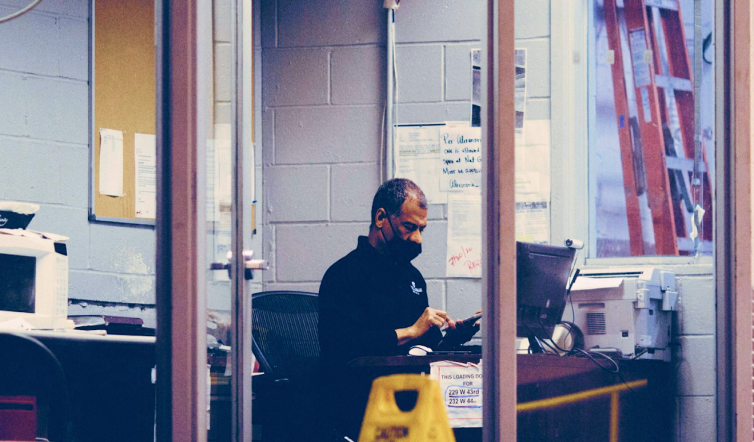 Source: WorkTrek
Source: WorkTrek 